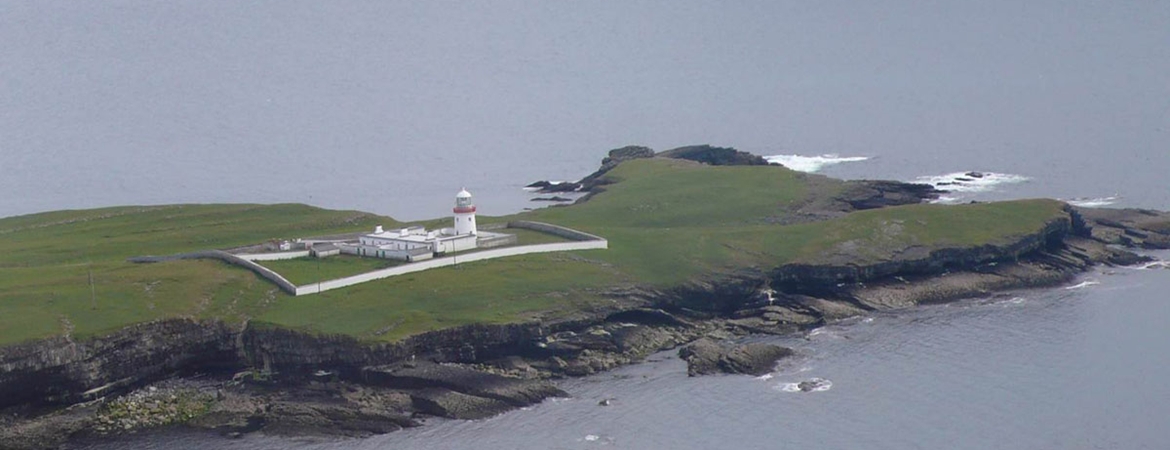This is a harbour light to guide from Donegal Bay and to mark the north side of the bay leading to Killybegs Harbour from the entrance up to Rotten Island.
The Corporation for Preserving and Improving the Port of Dublin (the Ballast Board) received a memorial on 24 February 1825 signed by merchants and traders of Killybegs requesting a light on St John's Point. This was not approved until April 1829, and Trinity House gave their statutory sanction the following month.
The tower, built of cut granite, was designed by the Board's Inspector of Works and Inspector of Lighthouses, George Halpin, and erected by the Board's workmen under Halpin's supervision.
The tower, painted white, had a first order catoptric fixed light 98 feet above high water with a visibility in clear weather of 14 miles. The light was first exhibited on 4 November 1831 with the buildings in an uncompleted state. The final cost at the end of 1833 was £10,507.8.5.
This set up lasted just over 100 years when the catoptric fixed light was changed to a first order cylindric refractor, occulting 4 seconds light, 2 seconds dark using acetylene generated from carbide instead of oil. The station was also converted to automatic unwatched operation from 30 November 1932.
On 1 July 1942 the light was changed from occulting to a flash of 2 seconds every 6 seconds. During 1962 the light was converted to electric using ESB utility mains with a diesel generator standby. The actual changeover was 24 September. If both electric sources fail the Attendant fits an acetylene burner in place of the electric lamps and connects the burner to two dissolved acetylene cylinders.
The duration of the flash was reduced from 2 seconds to 1.5 seconds on 1 February 1965.
The Corporation for Preserving and Improving the Port of Dublin (the Ballast Board) received a memorial on 24 February 1825 signed by merchants and traders of Killybegs requesting a light on St John's Point. This was not approved until April 1829, and Trinity House gave their statutory sanction the following month.
The tower, built of cut granite, was designed by the Board's Inspector of Works and Inspector of Lighthouses, George Halpin, and erected by the Board's workmen under Halpin's supervision.
The tower, painted white, had a first order catoptric fixed light 98 feet above high water with a visibility in clear weather of 14 miles. The light was first exhibited on 4 November 1831 with the buildings in an uncompleted state. The final cost at the end of 1833 was £10,507.8.5.
This set up lasted just over 100 years when the catoptric fixed light was changed to a first order cylindric refractor, occulting 4 seconds light, 2 seconds dark using acetylene generated from carbide instead of oil. The station was also converted to automatic unwatched operation from 30 November 1932.
On 1 July 1942 the light was changed from occulting to a flash of 2 seconds every 6 seconds. During 1962 the light was converted to electric using ESB utility mains with a diesel generator standby. The actual changeover was 24 September. If both electric sources fail the Attendant fits an acetylene burner in place of the electric lamps and connects the burner to two dissolved acetylene cylinders.
The duration of the flash was reduced from 2 seconds to 1.5 seconds on 1 February 1965.



